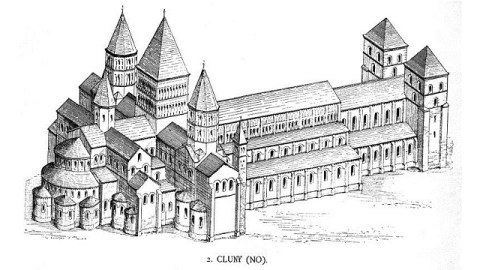Evidence of Things Not Seen: Virtual Reality and Sacred Spaces

“Now faith is the substance of things hoped for, the evidence of things not seen,” reads Hebrews 11:1 in the King James Bible. Attempts to give faith tangible form here on earth usually suffer at the hands of time, the destructive hands of humanity, or both. Thanks to modern technology’s ability to create virtual reality to supplement “real” reality, is it possible that supplementing might someday become supplanting? Is that time in the near future? For those who feel that virtual reality can never replace the spiritual reality of a sacred space, I offer the proposition that virtual reality is the new faith—truly evidence of things not seen physically but experienced on a totally different, if not astral, plane.
A recent cleaning of the frescoes of the Sistine Chapel revealed that dust brought in by visitors is causing “serious damage” to the artwork. The 15,000 to 20,000 visitors per day, which add up to around 4 million annually, bring all kinds of contamination on their persons, in addition to the humidity generated simply by their breathing. Curators of Michelangelo’s masterpieces hold their collective breaths wondering how they’ll manage to save the images from the ravages of the unwitting faithful. One solution is to have patrons walk through decontamination devices before entering the chapel, which would severely cut down on the number of people who could enter the space and endure the most worthwhile stiff neck of their life as they strain to see the wonderment far above. Da Vinci’s The Last Supper currently restricts viewers in this way as a conservationist measure, but even that work never saw the foot traffic the Sistine Chapel regularly does.
Before this latest sad news came to light, the Vatican had already commissioned a team to create a virtual tour of the Sistine Chapel. The tour (which can be seen here) allows you to swoop and zoom all about the Sistine Chapel, as if you were some angel freed amongst the frescoes. The effect can be dizzying at times, but once you get the hang of the controls, you’ll linger over the prophets and sibyls like a pro. My only suggestion would be to add a ceiling plan of the works, perhaps the same way that Google Maps allows you to toggle between aerial views and street name maps. It would be the virtual equivalent of an all-over wall text. (St. Peter’s Basilica is also available for virtual touring.)
Whereas the Sistine Chapel is experiencing a slow death by dust, Cluny Abbey (shown above) long ago felt the hand of human destructiveness. In the wake of the antireligious French Revolution, the abbey feel prey to burning and pillaging. Even into the nineteenth century did locals quarry the stones of the abbey to build their own homes. Historians have attempted to replace the stolen stones, but that physical restoration will never be complete. Only one of the original eight towers remains. However, the virtual restoration might be the best bet to approximate the power of the original structure. From the 10th through 12th centuries, Cluny Abbey housed Benedictine monks who wielded power on an international level. The monastery itself enjoyed both great prestige and generous patronage that made it the cultural and religious center of France and Europe. To see Cluny Abbey as a Middle Ages person could might allow us to understand how they saw what heaven on Earth might look like, and imagine what our own, modern concept might look.
A trip to Rome to see the Sistine Chapel in person is something beyond the finances of many people. Considering the impact of visiting in person on the site itself, maybe it’s best that we stay away. Cluny Abbey simply no longer exists. And yet both sites do “exist” in accessible form for anyone with a computer. The Sistine Chapel existed originally as a place in which the pope could contemplate nothing less than the end of the world—The Last Judgment—over and over, at his leisure. Thanks to virtual reality, anyone can contemplate that masterpiece in the same kind of depth. In that sense, faith here can truly be “evidence of things not seen” in the flesh, but seen over and over virtually—in a way freed of physicality and existing purely in the mind, and the soul.





